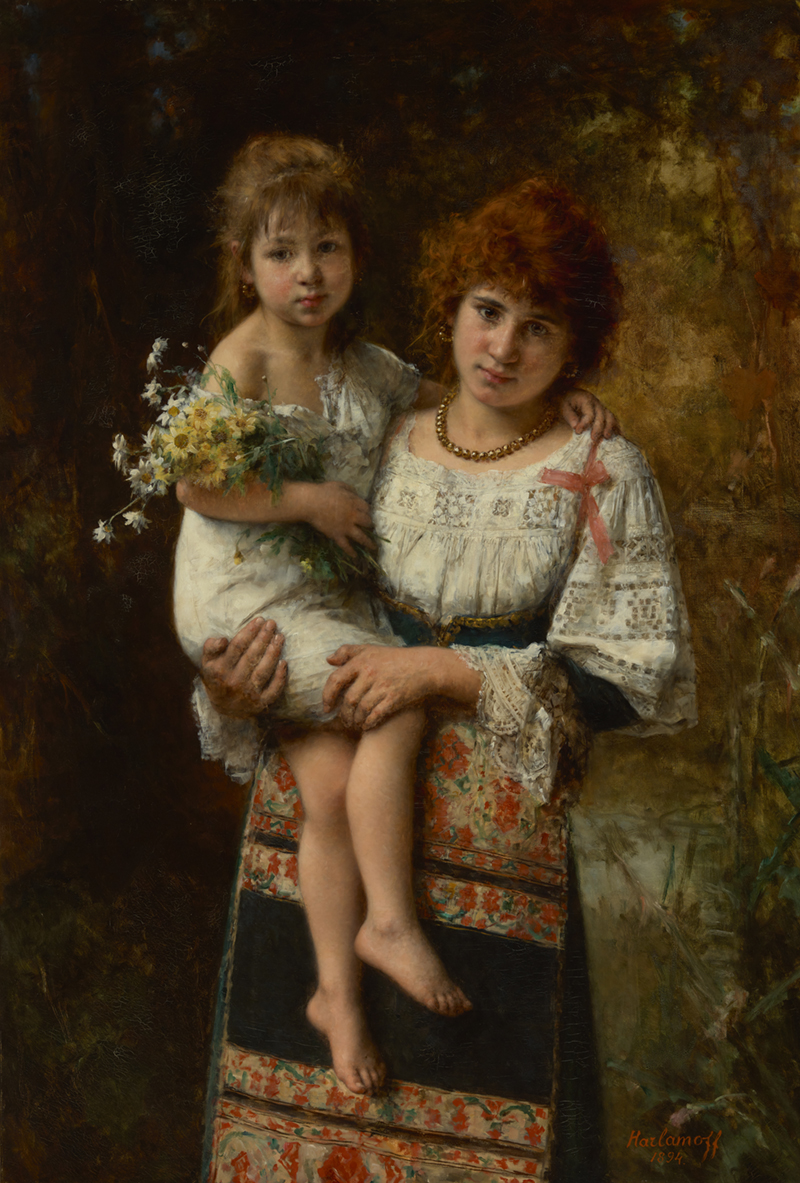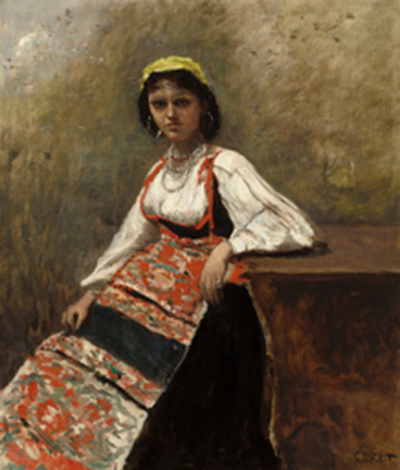Object of the Month: "Young Woman and Child" by Aleksei Alekseevich Kharlamov

Significant scholarly attention has been paid to the relationships between nineteenth-century Russian authors and artists, from the famous novelist Leo Tolstoy’s friendship with the artist Ilya Repin to the association of the playwright Anton Chekhov with the landscape painter Isaac Levitan. My honors thesis illuminates another such relationship: that between the well-known author Ivan Sergeevich Turgenev (1818–1883) and the lesser-known artist Aleksei Alekseevich Kharlamov (1840–1925). Both men spent the majority of their lives outside of Russia in émigré communities in Western Europe, particularly Paris. In my thesis, I argue that these two men, throughout their decade-long relationship, shared ideas about their respective arts—and were especially interested in the representation of women in fiction and painting.
Kharlamov’s 1894 painting Young Woman and Child entered the Museum of Art’s collection in 1907 and depicts a young woman in what appears to be traditional Russian blouse and pinafore. Yet my research shows that Kharlamov was actually borrowing from the French Barbizon painter Jean-Baptiste-Camille Corot, whose 1872 painting Italian Woman (La Morieri) uses this exact same costume. It is entirely likely that Kharlamov had met Corot in Paris and shared props. This discovery repositions Kharlamov as part of the larger artistic movement of the nineteenth century, where painters from Leon Bonnat to William Adolphe Bouguereau sought inspiration from other cultures and other periods in the history of art.
Stephen J. Pastoriza, Class of 2019

"Italian Woman (La Morieri)," 1892, by Jean-Baptiste-Camille Corot